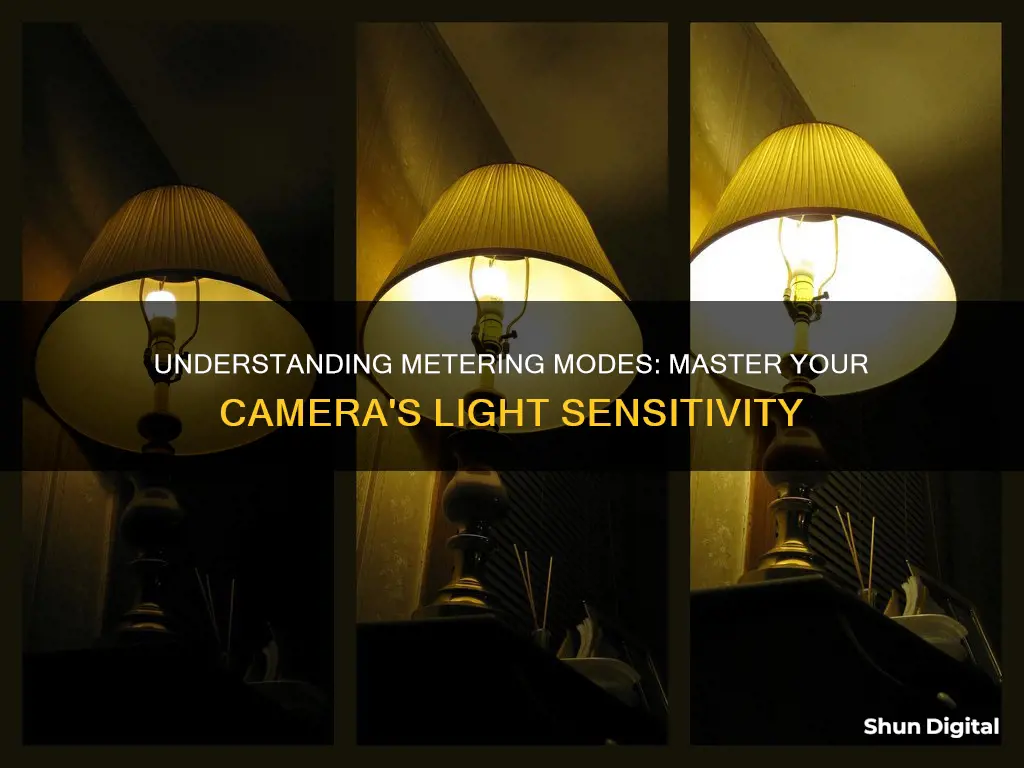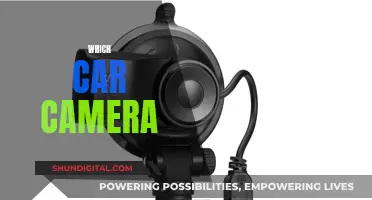
Metering modes are fundamental to photography as they help you control the brightness of your photos. In simple terms, metering is how your camera evaluates the light of a scene to determine the correct shutter speed, aperture, or ISO. The different metering modes allow the user to select the most appropriate one for use in a variety of lighting conditions.
Metering Mode Characteristics and Values
| Characteristics | Values |
|---|---|
| Purpose | To determine the correct exposure settings by analysing the light in the frame. |
| Factors Considered | Overall brightness, contrast, subject's distance, colour, highlights, etc. |
| Camera Metering Modes | Spot Metering, Center-Weighted Metering, Evaluative/Matrix/Multi Metering, Partial Metering, Highlight-Weighted Metering, Average Metering |
| Default Mode | Evaluative/Matrix/Multi Metering |
| Use Case | Spot Metering: High-contrast scenes, moon photography, theatre photography. Center-Weighted Metering: Close-up portraits, backlit subjects. Evaluative/Matrix/Multi Metering: Landscapes, portraits. |
| Camera Brands | Canon, Nikon, Sony, Fujifilm, Hasselblad |
| Camera Models | Canon EOS, Nikon D5500, Nikon D5, Nikon Z9, Canon R |
What You'll Learn

Evaluative/Matrix/Multi metering
However, the main drawback of this metering mode is that your camera can underexpose or overexpose the scene when there is a predominance of black or white. It may not be appropriate in scenes with unusual lighting where the environment is overwhelmingly light or dark.
To change your camera to Evaluative/Matrix/Multi Metering, press the metering mode button and use the main command dial (on some DSLR cameras). Alternatively, go into your camera's menu settings (most mirrorless cameras) and select the metering you want.
Troubleshooting Camera Battery Issues: A Quick Fix Guide
You may want to see also

Centre-weighted metering
While centre-weighted metering prioritises the centre of the frame, it does still take the background into consideration. If the background is significantly brighter than the subject in the centre, it will cause a darkening in exposure, but to a lesser degree than if using a metering mode that averages the exposure of the entire frame.
Finding Night Mode: Camera Settings Explored
You may want to see also

Spot metering
Additionally, spot metering is beneficial when your subject is wearing very light or very dark clothing. Digital cameras measure reflected light, so the colour of the surface you meter affects the exposure reading. By using spot metering, you can measure the exposure of your subject's face only, ensuring an accurate exposure.
To use spot metering, you need to select it from your camera's menu system or an external control. Once selected, you can use manual mode to set your exposure, or let the camera do it automatically. You can also use the exposure compensation feature to avoid having to correct the exposure in post-production.
It is important to know where your camera's spot meter point is located. In some cameras, it is positioned in the central part of the frame, while in others, it follows the active focal point when using autofocus mode.
Extend Tasco Trail Camera Battery Life
You may want to see also

Partial metering
Compared to spot metering, partial metering is less precise, but it can be a good middle ground between camera and photographer control. It is also a good option if you are unsure which metering mode to use.
USB Camera Chargers: What's the Deal?
You may want to see also

Highlight-weighted metering
When using highlight-weighted metering, the camera meters the brightest elements of a scene and uses those as the basis for taking an exposure reading. This approach can be extremely beneficial in situations where you want to ensure that the brightest parts of your image are not overexposed, even if it results in a significant portion of the photo being underexposed.
For example, when photographing a person wearing bright clothing on a sunny day, highlight-weighted metering can help expose the highlights correctly, preventing them from being blown out. Similarly, when shooting a subject with spotlights or coloured lighting, this mode can help achieve the desired exposure without overexposing the highlights.
However, it's important to note that highlight-weighted metering may not be the best choice for everyday shooting. It often results in a large portion of the image being underexposed, requiring additional editing in post-processing software to bring up the shadows and adjust the image accordingly.
Additionally, when using this mode, it is recommended to shoot in RAW format to take advantage of the increased data available for editing. Shooting in JPEG may not provide the desired level of flexibility due to the limited image data.
Overall, highlight-weighted metering can be a valuable tool in certain situations, but it may require additional adjustments and a good understanding of exposure settings to achieve the desired results.
Battery Pack Cameras: Powering Remote Photography
You may want to see also
Frequently asked questions
Metering mode is how your camera measures the light in a scene to determine the correct exposure.
The camera evaluates the amount of reflected light in a scene and calculates the correct exposure settings (shutter speed, aperture and/or ISO sensitivity) based on that information.
The three primary metering modes are evaluative (or matrix/multi-pattern), centre-weighted, and spot. Other metering modes include partial, highlight-weighted and entire screen average.
The right metering mode depends on the lighting conditions and the type of scene you're shooting. For example, evaluative metering is good for general use, centre-weighted is good for portraits, and spot metering is good for high-contrast scenes.







